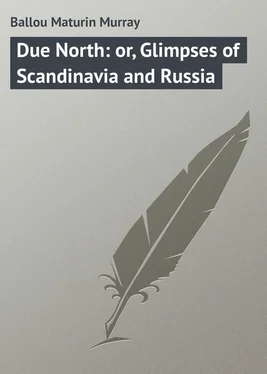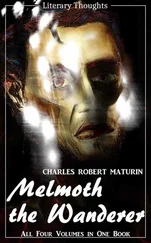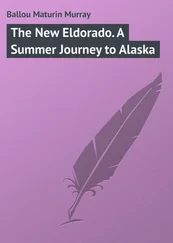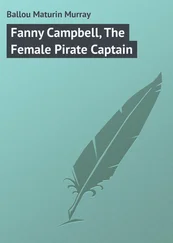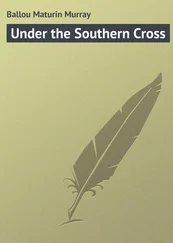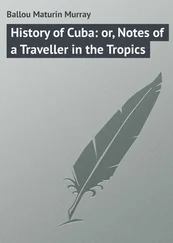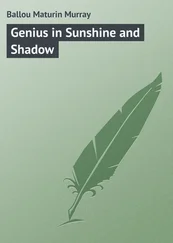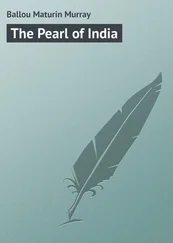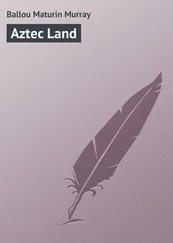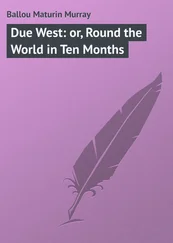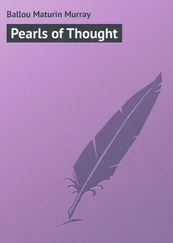Maturin Ballou - Due North - or, Glimpses of Scandinavia and Russia
Здесь есть возможность читать онлайн «Maturin Ballou - Due North - or, Glimpses of Scandinavia and Russia» — ознакомительный отрывок электронной книги совершенно бесплатно, а после прочтения отрывка купить полную версию. В некоторых случаях можно слушать аудио, скачать через торрент в формате fb2 и присутствует краткое содержание. Жанр: foreign_prose, Путешествия и география, на английском языке. Описание произведения, (предисловие) а так же отзывы посетителей доступны на портале библиотеки ЛибКат.
- Название:Due North: or, Glimpses of Scandinavia and Russia
- Автор:
- Жанр:
- Год:неизвестен
- ISBN:нет данных
- Рейтинг книги:3 / 5. Голосов: 1
-
Избранное:Добавить в избранное
- Отзывы:
-
Ваша оценка:
- 60
- 1
- 2
- 3
- 4
- 5
Due North: or, Glimpses of Scandinavia and Russia: краткое содержание, описание и аннотация
Предлагаем к чтению аннотацию, описание, краткое содержание или предисловие (зависит от того, что написал сам автор книги «Due North: or, Glimpses of Scandinavia and Russia»). Если вы не нашли необходимую информацию о книге — напишите в комментариях, мы постараемся отыскать её.
Due North: or, Glimpses of Scandinavia and Russia — читать онлайн ознакомительный отрывок
Ниже представлен текст книги, разбитый по страницам. Система сохранения места последней прочитанной страницы, позволяет с удобством читать онлайн бесплатно книгу «Due North: or, Glimpses of Scandinavia and Russia», без необходимости каждый раз заново искать на чём Вы остановились. Поставьте закладку, и сможете в любой момент перейти на страницу, на которой закончили чтение.
Интервал:
Закладка:
A large proportion of the many persons whom we met in the Museum were Danes, whose respectability and admirable behavior impressed us most favorably, – a conviction which was daily corroborated upon the public streets, where there was none of the grossness observable which is so glaring among the middle and lower classes of more southern cities. There are no mendicants upon the thoroughfares; order and cleanliness reign everywhere, reminding one of Holland and the Hague. The young trees and delicate flowers in the public gardens require no special protection, and one looks in vain for anything like rowdyism in the crowded thoroughfares. Though the Danes are free consumers of malt liquors, not a case of intoxication met the author's eye while he remained in Copenhagen.
The Ethnological Museum of the city, better known as the Museum of Northern Antiquities, is generally considered to be the most remarkable institution of its class in Europe. Students in this department of science come from all parts of the civilized world to seek knowledge from its countless treasures. One is here enabled to follow the progress of our race from its primitive stages to its highest civilization. The national government liberally aids all purposes akin to science and art; consequently this Museum is a favored object of the State, being also liberally endowed by private munificence. Each of the three distinctive periods of Stone, Bronze, and Iron forms an elaborate division in the spacious halls of the institution. In classifying the objects, care has been taken not only to divide the three great periods named, but also in each of these divisions those belonging to the beginning and the end of the period are chronologically placed, as fast as such nice distinctions can be wrought out by careful, scientific study and comparison. Here the visitor gazes with absorbing interest upon the tangible evidences of a race that inhabited this earth probably thousands of years before it was broken into islands and continents. Their one token, these rude, but expressive stone implements, are found equally distributed from the Arctic Circle to the Equator, from Canada to Brazil, from England to Japan. Scientists whose culture and intelligence entitle their opinion to respect, place the Stone Age as here illustrated at least twenty thousand years before the birth of Christ. How absorbing is the interest attaching to these relics which ages have consecrated! No matter what our preconceived notions may be, science only deals with irrefutable facts. The periods delineated may be thus expressed: first the Flint period, which comes down to fifteen hundred years before Christ; followed by the Bronze, which includes the next twelve or thirteen hundred years; then the Iron, which comes down far into the Christian era. What is termed the Mediæval brings us to 1536, since which time there is no occasion for classification. No wonder the antiquarian becomes so absorbed in the study of the past. "The earliest and the longest has still the mastery over us," says George Eliot. Progress is daily making in the correct reading of these comprehensive data, and those who may come after us will be born to a great wealth of antiquity. Other countries may learn much from the admirable management of this Museum in the matter of improving the educational advantages which it affords. Professors of eminence daily accompany the groups of visitors, clearly explaining the purport and the historical relations of the many interesting objects. These persons are not merely intelligent employees, but they are also trained scientists; and, above all, they are enthusiastic in freely imparting the knowledge which inspires them. Such impromptu lectures are both original and impressive. Indeed, to go through the Ethnological Museum of Copenhagen understandingly is a liberal education. It should be added that the zeal and affability of these able officials is as freely and cheerfully extended to the humblest citizen as to distinguished strangers. One returns again and again with a sort of fascination to these indisputable evidences of history relating to periods of which there is no written record. If they are partially defective in their consecutive teachings, they are most impressive in the actual knowledge which they convey. Without giving us a list of sovereigns or positive dates, they afford collectively a clearer knowledge of the religion, culture, and domestic life of the people of their several periods than a Gibbon or a Bancroft could depict with their glowing pages.
The Danes are a cultured people, much more so, indeed, than the average classes of the continental States. The large number of book-stores was a noticeable feature of the capital, as well as the excellent character of the books which were offered for sale. These were in German, French, and English, the literature of the latter being especially well represented. Copenhagen has more daily and weekly newspapers, magazines, and current news publications than Edinburgh or Dublin, or most of the provincial cities of Great Britain. It may be doubted if even in this country, outside of New England, we have many districts more liberally supplied with free library accommodations, or with educational facilities for youth, than are the populous portions of Zeeland and Jutland. Even small country villages have their book-clubs and dramatic clubs. A very general taste for the drama prevails. Indeed, Denmark has a national drama of its own, which exercises a notable influence upon its people. This Government was the first in Europe to furnish the means of education to the people at large on a liberal scale, to establish schoolhouses in every parish, and to provide suitable dwellings and incomes for the teachers. The incipient steps towards this object began as far back as the time of Christian II., more than three centuries ago, while most of the European States were grovelling in ignorance. Copenhagen has two public libraries, – the Royal, containing over six hundred thousand books; and the University, which has between two hundred and fifty and three hundred thousand volumes, not to speak in detail of a particularly choice collection of manuscripts. These under reasonable restrictions are free to all, citizen or foreigner. The National University is of the first class, and supports a well organized lecture-system, like that of the Sorbonne in Paris, and which is also free to all, women having the same facilities afforded them as those enjoyed by the sterner sex. This institution, we were assured, is conducted upon the most modern educational system. It was founded in 1478, and at the present writing has between twelve and fifteen hundred students, instructed by about fifty able professors.
Though Denmark is a small kingdom, containing scarcely three millions of people, yet it has produced many eminent men of science, of art, and of literature. The names of Hans Christian Andersen, of Rasmus Rask the philologist, of Oersted the discoverer of electro-magnetism, of Forchhammer the mineralogist, and Eschricht the physiologist, will occur to the reader's mind in this connection. It is a country of legend and romance, of historic and prehistoric monuments, besides being the very father-land of fairy tales. The Vikings of old have left their footprints all over the country in barrows and tumuli. It is not, therefore, surprising that the cultured portion of the community are stimulated to antiquarian research. The masses are clearly a pleasure-loving people, easily amused and contented, troubling themselves very little about religious matters; the arts, poetry, and the drama being much more reverenced than the church. The accepted and almost universal doctrine is that of Lutheranism. One meets comparatively few intelligent persons who cannot speak English, while many speak French and German also. The Danish language is a modified form of the old Gothic, which prevailed in the earliest historic ages.
Читать дальшеИнтервал:
Закладка:
Похожие книги на «Due North: or, Glimpses of Scandinavia and Russia»
Представляем Вашему вниманию похожие книги на «Due North: or, Glimpses of Scandinavia and Russia» списком для выбора. Мы отобрали схожую по названию и смыслу литературу в надежде предоставить читателям больше вариантов отыскать новые, интересные, ещё непрочитанные произведения.
Обсуждение, отзывы о книге «Due North: or, Glimpses of Scandinavia and Russia» и просто собственные мнения читателей. Оставьте ваши комментарии, напишите, что Вы думаете о произведении, его смысле или главных героях. Укажите что конкретно понравилось, а что нет, и почему Вы так считаете.
